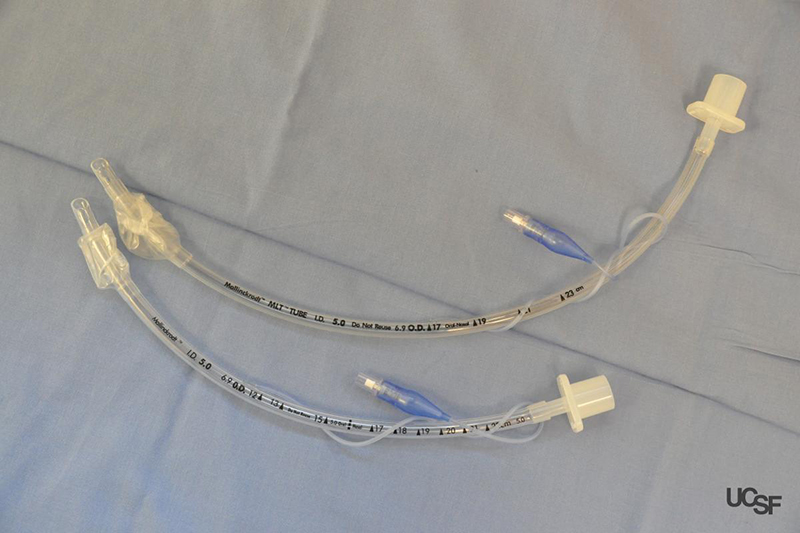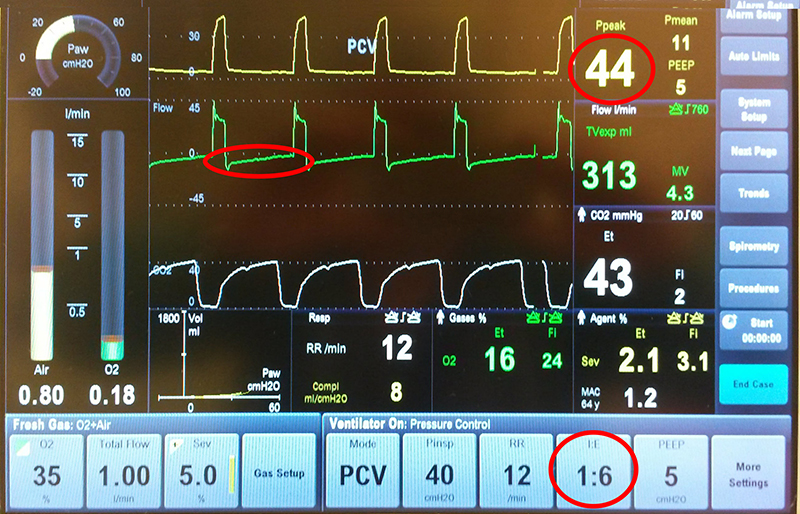FEATURES
A microlaryngoscopy tube (also generally called 'MLT', although this is a registered trademark) is in essence a pediatric-sized standard ETT with an adult length or an adult standard ETT with a pediatric-sized diameter, whichever way you want to look at it.

'MLT' also stands for 'massively long tube'!
The MLT® comes in three sizes, 4.0, 5.0 and 6.0mm. The size 5.0mm tube is the most commonly used.
Comparing a 5.0 MLT® and a 5.0 'standard' pediatric endotracheal tube side by side, two other differences apart from the obvious one in length noticeable:
- Different cuff size/ length: The MLT® has a cuff size/ length that would be typical for an adult-sized 'standard' ETT. A 'standard' pediatric 5.0 enndotracheal tube has a smaller cuff made for a pediatric-sized trachea (see picture below).
- Distance of cuff from tube tip: In an MLT® the cuff is further away from the tube tip which is acceptable as the adult trachea is obviously longer than the pediatric one (see picture below).

For pediatric ET tubes the length of the cuff and the distance of the cuff from the tip matter, because tracheas of pediatric patients are shorter, so the risk of accidentally intubating a main bronchus is higher.
The size 5.0 MLT® will just about accomodate an adult stylet, the 4.0 one won't.
USES
Microlaryngoscopy tubes are used, as the name suggests, in laryngeal surgery. Particularly in vocal chord surgery, the smaller diameter of these tubes allows the surgeon an easier view and access to the vocal chords and adjacent structures.
SPECIAL CONSIDERATIONS
One thing to keep in mind when using ETTs of such small size in adults is the relatively high resistance to gas flow through these tubes, meaning that comparatively high airway pressures are required to deliver the desired tidal volumes. Airway pressure is significantly higher proximal to the tube where it is measures than in the alveoli. Similarly, gas flow is slow during expiration, meaning that lower I:E ratios are often necessary to allow for complete expiration.

This also means that patients do not breathe well unsupported through a MLT® under anesthesia. Try this out next time: Take a 5.0 MLT®, pinch your nose, seal your mounth around the connector, and breathe through the tube!
